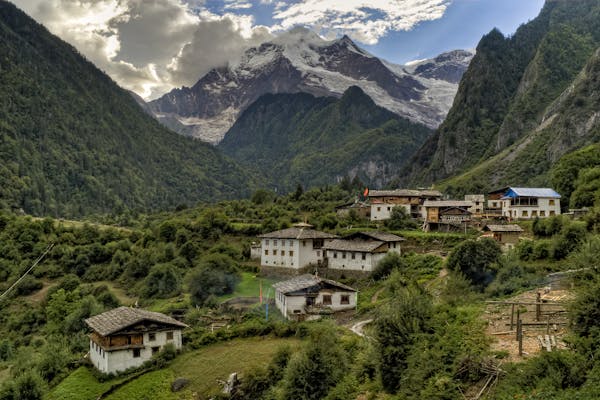
Exploring Villages in Rural China: A Journey Through the Countryside

Rural China village offers a captivating glimpse into the heart of Chinese culture and society. As travelers embark on a journey through the countryside, they uncover the unique aspects of village life that define this vast area of China. From the wooden houses of Yunnan to the rice terraces of Guangxi, exploring these villages provides a rich tapestry of traditions and experiences.
Introduction to Rural China village
Rural China village is characterized by its diverse landscapes and vibrant communities. Understanding the concept of villages is essential, as they form the backbone of the rural population. A village in China, defined as a clustered human settlement, can range from a few hundred to thousands of inhabitants. These administrative villages, known as “cūn,” are critical for local governance and reflect the socio-economic fabric of Chinese society.
Understanding the Concept of Villages
In the context of rural areas, villages serve as fundamental units for community organization and local administration. With over six hundred thousand administrative villages across the nation, each plays a vital role in census processes, mail delivery, and community engagement. Natural villages, while lacking administrative status, also contribute to the rich tapestry of village life in China, enhancing the understanding of rural traditions and practices.
The Importance of Provinces in Rural China
China’s provinces are integral to understanding the governance and resource allocation in rural areas. Each province boasts unique cultural and geographical characteristics that shape its villages. For example, Yunnan and Guizhou are known for their ethnic diversity, featuring communities such as the Miao and Tibetan peoples. Provinces like Sichuan and Hunan are celebrated for their agricultural productivity, influencing local customs and practices throughout China.
Why Explore the Slow Side of China?
Exploring rural China allows travelers to experience a slower pace of life that contrasts sharply with the bustling urban centers like Shanghai. Visitors can engage with local villagers, participate in traditional festivals, and marvel at the natural beauty surrounding areas such as Dali and Erhai Lake. As urbanization changes the landscape, understanding these rural villages becomes crucial, preserving the cultural identity and resilience of Chinese peasants before they fade away.
Yunnan Province: A Cultural Gem

Overview of Yunnan’s Diverse Villages
Yunnan Province is indeed a cultural gem within rural China village, celebrated for its diverse ethnic groups and stunning landscapes. The province is home to the Yi, Bai, and Hani communities, each reflecting a unique tapestry of traditions, languages, and customs. Villages such as Baishuitai showcase traditional wooden houses alongside mineral terraces, symbolizing the harmonious relationship between architecture and environment. Visitors are often captivated by the intricate designs in local crafts and the vibrant clothing worn during festivals, which further highlight the rich cultural experiences embedded in Yunnan’s villages. The biodiversity of this area, coupled with its varied topography, creates a picturesque setting for those eager to engage with local traditions and agricultural practices that sustain these communities.
Key Attractions in Yunnan Province
Traveling through Yunnan Province unveils a plethora of attractions that draw visitors into its charming rural villages. The ancient town of Lijiang, a UNESCO World Heritage site, stands out with its well-preserved architecture and vibrant local culture, presenting an authentic view of Chinese history. The Stone Forest offers a remarkable visual experience with its unique limestone formations, ideal for exploration and photography.
Additionally, the Yuanyang Rice Terraces are a testament to the ingenuity of local farmers, adapting to the mountainous terrain while maintaining stunning landscapes. Visitors can also immerse themselves in traditional ethnic festivals like the Yi Torch Festival, where colorful costumes, lively music, and dance offer a glimpse into the rich heritage of the region, making every trip to Yunnan a culturally enriching experience.
The Best Time to Visit Yunnan
Choosing the best time to visit Yunnan is crucial for experiencing the province’s breathtaking countryside and vibrant village life. Spring, from March to May, and autumn, from September to November, present the mildest weather and the most visually stunning landscapes. During spring, blossoms fill the air, and the rice terraces begin to take shape, while autumn is marked by colorful foliage and local harvest festivals.
This period allows travelers to explore the rural areas comfortably and partake in outdoor activities amidst the natural beauty of Yunnan. However, summer’s heavy rainfall may disrupt travel plans, particularly in mountainous regions. Thus, planning visits during these ideal seasons ensures an enjoyable and memorable experience in the picturesque landscapes of Yunnan Province.
Guizhou Province: Nature and Tradition

Exploring the Unique Villages of Guizhou
Guizhou Province is renowned for its breathtaking natural scenery and rich cultural heritage, presenting an array of unique villages nestled within its mountainous terrain. The province houses several ethnic minority groups, notably the Miao and Dong, whose villages are adorned with intricate wooden architecture and vibrant textiles that tell stories of their ancestors.
For example, Xijiang Miao Village provides an immersive opportunity for visitors to experience traditional lifestyles, local crafts, and age-old customs that have been preserved over generations. The stunning landscapes, including the majestic Huangguoshu Waterfall and the dramatic Karst formations, enhance the allure of exploring Guizhou’s rural areas, offering travelers a serene retreat into nature while learning about the intricate balance between tradition and the environment.
Traditional Festivals in Guizhou
In Guizhou, traditional festivals offer vibrant celebrations that showcase the rich cultural heritage of its ethnic communities. The Miao New Year stands out as one of the most important festivals, characterized by colorful clothing, traditional music, and energetic dance performances that bring villages together.
During this festive period, villagers engage in various activities, from singing competitions to communal feasts, fostering a strong sense of community and shared joy. Additionally, the Dong’s Drum Tower Festival draws crowds as villagers participate in drum performances, singing, and dancing around iconic drum towers, which symbolize Dong culture. These lively celebrations not only preserve cultural traditions but also attract visitors eager to witness and partake in the unique customs of Guizhou’s diverse population, enriching their understanding of Chinese culture.
Best Practices for Visiting Guizhou
When venturing into Guizhou, it is essential to respect local customs and traditions to ensure a positive experience for both visitors and residents. Engaging with local communities, learning basic phrases in the local dialects, and participating in traditional activities can significantly enhance interactions and foster goodwill.
Dressing modestly is advisable, particularly when visiting religious sites or participating in local festivals, demonstrating respect for the culture. Moreover, being mindful of one’s environmental impact and supporting local artisans by purchasing handmade crafts can contribute to the sustainability of these communities. Finally, travelers should prepare for the mountainous terrain and unpredictable weather conditions, ensuring they have appropriate gear for outdoor activities, which allows for a more enjoyable and enriching exploration of Guizhou’s rural charm.
Guangxi: The Heart of Scenic Beauty

Villages Surrounded by Stunning Landscapes
Guangxi Zhuang Autonomous Region is a spectacular area of China that captures the imagination with its dramatic karst mountains, lush rice fields, and winding rivers. The famous Li River snakes through this picturesque landscape, offering breathtaking views that make it a prime destination for travelers.
Villages like Xingping and Fuli boast charming architecture and vibrant local crafts, showcasing the region’s cultural richness. Additionally, the traditional customs preserved in these rural villages enhance the scenic beauty, inviting visitors to immerse themselves in the authentic village life that has thrived for centuries.
Experience the Local Culture in Guangxi
To truly appreciate Guangxi, one must delve into the local culture, particularly the vibrant traditions of the Zhuang and other ethnic communities. Engaging in festivals like the Zhuang Song Festival allows visitors to witness traditional music and dance that reflect the region’s lively spirit.
Furthermore, interacting with local artisans such as weavers and bamboo craftsmen provides an understanding of the traditional crafts that sustain the cultural identity of Guangxi. Additionally, sampling local dishes like rice noodles and unique specialties such as Luosifen (snail rice noodles) offers a delicious glimpse into the culinary heritage of this enchanting region.
Travel Tips for a Trip to Guangxi
When planning a trip to Guangxi, timing is crucial for experiencing the region’s stunning landscapes and cultural attractions. The best times to visit are in spring (April to June) and autumn (September to November), when the weather is mild, making outdoor exploration enjoyable.
Travelers should book accommodations in advance, especially during peak seasons, to secure their stay in popular areas. Hiring local guides enhances the experience, providing insights into the rich history and culture of Guangxi’s villages, while being prepared for hiking and biking ensures comfort during outdoor adventures.
Planning Your Trip to China

Choosing the Right Provinces to Visit
Choosing the right provinces in China is essential for curating a travel experience that aligns with your interests. For those captivated by cultural experiences and natural beauty, Guangxi stands out with its stunning landscapes and vibrant village life. Meanwhile, provinces like Yunnan and Guizhou are perfect for exploring ethnic diversity and traditional lifestyles.
For travelers seeking ancient history, provinces such as Anhui and Shaanxi offer rich historical insights. Additionally, understanding transportation options and accessibility in each province is vital for smooth travel, making research into local customs and cuisines a key part of the planning process.
Creating an Itinerary for Rural Exploration
Creating an itinerary for rural exploration in China allows travelers to fully engage with the diverse cultures and landscapes. Prioritizing key destinations based on personal interests, such as cultural festivals or historical sites, streamlines the journey.
Allocating time for cultural immersion, including local activities and interactions, ensures a richer experience. Flexibility is important, as rural areas may have limited transportation options and unexpected events can occur. Collaborating with local guides enhances understanding of the regions visited, making the exploration of rural China both memorable and enriching.
Travel Safety and Cultural Respect in Villages
Travel safety and cultural respect are vital when visiting rural China villages, where unique customs and traditions thrive. Visitors should remain aware of their surroundings and adhere to local guidelines to ensure personal safety. Understanding local customs, such as appropriate dress and social norms, fosters goodwill and positive interactions with villagers.
It is also important to seek permission before photographing people or property, showing respect for their privacy. By practicing responsible tourism and supporting local economies, travelers can contribute to the sustainability of these communities while creating lasting memories in rural China.

Frequently Asked questions on Rural China Village
- Where can one find the comprehensive rural china village list?
- Which are small villages in China?
- Where the Poor villages in China situated?
- List of village in China?
- List of rural areas in China?
- Small rural china village?
- China village life?
- How are rural China villages compared to American villages?
- Ancient Chinese village names?
- Are rural China villages similar to those in developing countries?









Leave a Reply